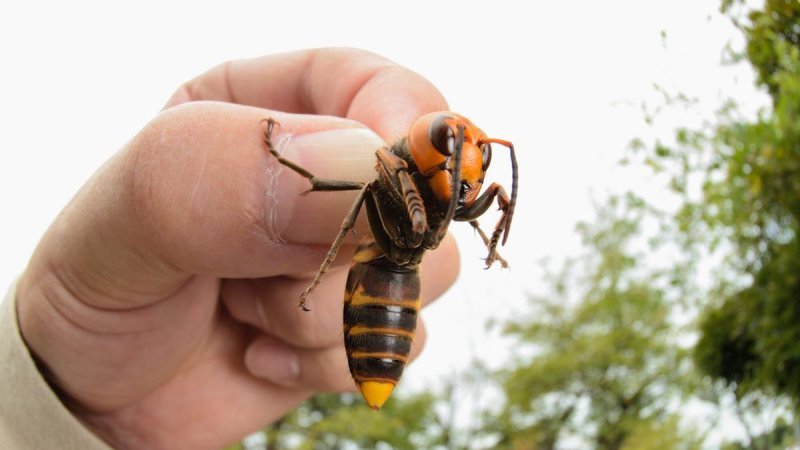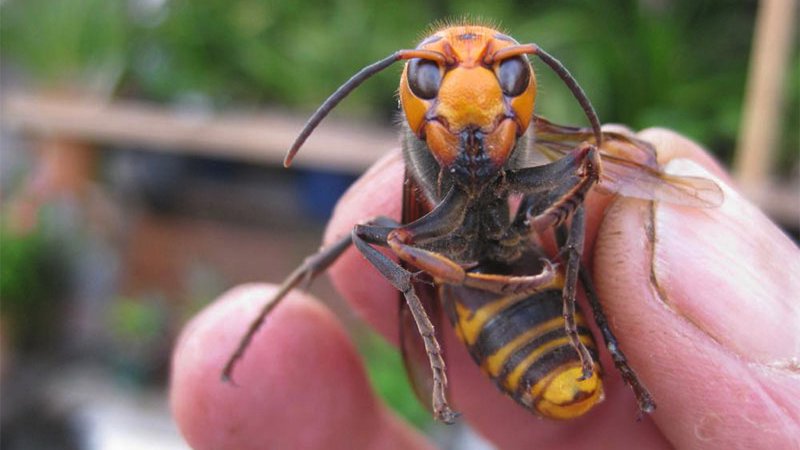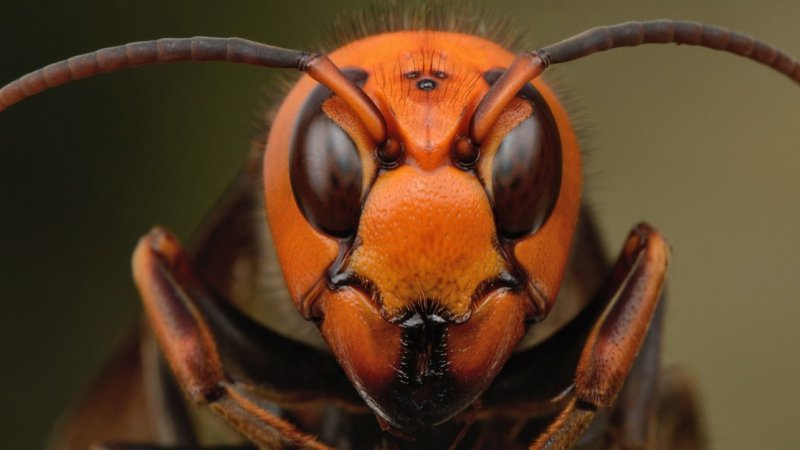If one day you go to Japan and come across one of these wasps, it’s not your lucky day. The Asian giant hornets or vespa mandarina inhabit some of the best travel destinations in Asia. Even if you’re not afraid of insects like that, you might start to reconsider about it.
Just to give you an idea of the lethality of these “killer bees” let's consider the 2013 case of southeastern China. A swarm of them killed more than 40 people. Those who survived the stings were left with bullet hole-like wounds. Apart from that many suffered kidney damage, and gained lifelong sequelae.
Another factor that differentiates them from other bees is that they do not lose their stings when stinging someone. They can injure and hurt you several times if they are agitated. So, if you are lucky enough to find just one of these, know that it can be something very dangerous and risky. Let's get to know a little more about the mandarin wasps.

Table of Content
Getting to Know Mandarin Wasps
The Asian giant hornets, or as they are known in Japan, ōsuzumebachi (オオスズメバチ), are usually found in Asia. From Taiwan, China, western India, Nepal, but they are more common in the mountains of Japan. They were first classified around 1850 by a British named Frederick Smith.
This wasp species is considered the largest in existence. They have two larger compound eyes. In addition to them, they still have three simple eyes on the top of their heads (each with a single lens).
Bumblebees grow on average between 2.5 cm and 4.5 cm in length with a wingspan reaching around 7 cm. The queens grow up to 5.5 cm, their head is orange, black jaws and the body is black with gold.
As already said, unlike other species of bees, its stinger is not barbed, it remains attached to its body, even when used. They are then able to sting their victims several times over and over again. The injected venom is known to have eight distinct chemicals.

HabitatE and development of mandarins
Mandarins inhabit and build their nests in highland forests, in tropical and temperate areas. They prefer forests or low mountain foothills. Nests are established by already fertilized wasps that select a place to start their own colony. They dig their nests near the roots of rotten trees or taking advantage of existing holes or tunnels, made by rodents.
After they build their nests, the queen lays an egg in each cell, which hatches for about a week in early spring. The larvae undergo a five-step metamorphosis until they reach the adult stage, a process that takes 14 days. After that, the hive already has its first team of workers.
At the end of summer, the colony reaches its peak of 700 workers, most of them female. Males leave the hive when they become adults, and die when they mate. When autumn arrives, both the workers and the current queens die, leaving the young queens fertilized. These survive the winter, starting the process again in the spring.

Behavior of mandarin wasps
Their behavior is said to be aggressive, so much so that they often attack other species of wasps and bees. They attack other bees as well to obtain larvae, pupae and even adults to feed on. They use their jaws, strength and agility to kill their victims. They can even kill larger insects.
They kill about 40 bees per minute. They cannot digest solid proteins, so they only eat the fluids of their victims. They can wipe out an entire colony in a few hours. They can fly around 40 km per hour, and can travel a distance of over 140 km per day.
Even so, they are very sociable among themselves, working very well within the colony, and in the search for food. They are also known to favor and defend their young. They are considered predators in their environment, so they do not have natural predators.
Did you know that there is also a rock band called Vespas Mandarinas, if you google it you will see more music stuff than the wasps themselves.
threat and defense of mandarin WASPS
Humans, in turn, represent the greatest threat to them. They are widely consumed as a source of food, either fried or served as sashimi. Therefore, their numbers have been significantly decreasing over the years. But the main threat is uncontrolled deforestation, leading to the loss of their natural habitat.
Mandarin wasps have a stinger that is about 6.25 mm long. The venom has eight distinct chemicals, each with a purpose. Ranging from making breathing difficult, skin tissue degeneration, attacking the nervous system and even attracting other wasps to the victim. The stings can even cause kidney failure. About 40 people die each year due to the attack of these wasps.
However, humans are not the favorite prey of these wasps. Still, we must be careful when walking in areas that are their habitat. Because those who have felt their sting claim that the pain is very painful and unbearable.
